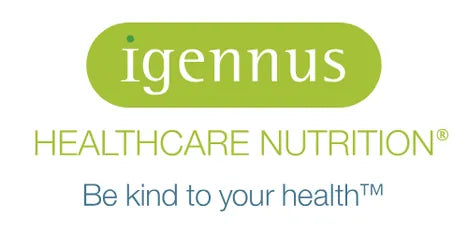Whether you are a frequent visitor at the gym, enjoy a daily walk, or perform a demanding manual job, it is essential to be aware of how your activity levels increase your nutrient requirements. Whilst carbohydrate and protein intake are important for the whole population on a daily basis, requirements may increase if your activity levels are above what could be considered inactive. This article provides an overview of the role of protein and carbohydrate consumption in exercise recovery (regardless of type). It also sheds light on what your needs are based on your activity levels and explores other nutrients you may want to consider.
Why nutrition is important in sports recovery
The health benefits associated with exercise are well documented; exercise improves energy production, strengthens blood vessels and supports cardiovascular health, as well as providing mental health benefits, including reduced stress, anxiety and depressive symptoms. (1, 2) However, exercise has an anabolic effect on the body, depleting fuel stores and damaging muscle tissue, which can increase the likelihood for injury and illness. It is no coincidence that many experience increased appetite following exercise; the body needs to replenish energy stores and support the health of muscles, making food choices important in optimising these processes. (3)
1. Replenish fuel stores with carbohydrate-rich foods
During endurance and resistance exercise, the energy used is derived from glycogen, the main storage form of glucose in the body, which is stored in skeletal muscle and the liver. (3) Exercise can, therefore, lead to depletion of stored glycogen, making replenishment essential. This can be achieved with the consumption of carbohydrates in the form of fruit, starchy vegetables, grains, legumes and dairy products. Generally speaking, the amount of carbohydrates you should consume depends on the duration and type of exercise, and is as follows: (4)
- Light intensity exercise (30 mins/day): 3-5 g/kg/day
- Moderate intensity exercise (60 mins/day): 5-7 g/kg/day
- Endurance exercise (1-3 hrs/day): 6-10 g/kg/day
- Extreme endurance exercise (more than 4 hrs/day): 8-12 g/kg/day
An individual weighing 70 kg performing light intensity exercise for 30 minutes a day should therefore consume around 210-350 g of carbohydrates throughout the day and increase this accordingly on days when more exercise is performed.
Why when you eat matters
Whilst carbohydrate consumption is recommended throughout the day, energy levels may suffer if you fail to consume carbohydrate-rich foods within a few hours of exercising. This is because glycogen synthesis is considered a slow process, i.e. it takes a while for stores to be replenished. However, immediately after exercise, the body benefits from an increase in muscle glucose sensitivity, allowing for more efficient glucose uptake and, in turn, glycogen synthesis. (3) A workout earlier in the day, followed by a delay in consuming a balanced meal may reduce the body’s ability to replenish energy stores and result in a reduction in available energy. Consuming a carbohydrate-rich snack within an hour of exercise, and a balanced meal also containing carbohydrates within 2-3 hours, will better support energy levels throughout the day.
Table 1: Carbohydrate content of certain foods
When exercising in quick succession (within eight hours of previous exercise sessions), more rapid replenishment of energy stores is required to support performance. Therefore, carbohydrate foods with a medium to high glycaemic index ([GI] - which means they can be converted into sugar more quickly), such as a slice of bread or a jacket potato, may be more beneficial. (3, 4) Consuming carbohydrate-rich foods (0.6-0.7 g carbohydrate per kilogram of body weight) every hour for four hours following exercise may also support faster replenishment for the next session. For a person weighing 70 kg who is competing in two events in one day, this would average at 42-49 g of carbohydrate-rich foods per hour.
2. Promote muscle repair with protein-rich foods
Muscles are essentially made up of protein structures, with contraction of the muscles during exercise leading to a breakdown of muscle protein both during and after exercise, resulting in muscle damage. (3) This is associated with an increase in inflammatory markers, which can often lead to muscle soreness, as seen in delayed onset muscle soreness (DOMS). Consuming food sources of protein post-exercise is therefore important for reducing protein degradation, supporting protein balance and initiating muscle protein synthesis. (7)
Food sources of protein include animal produce, lentils and beans, grains, nuts and seeds. Whilst animal proteins are considered ‘whole proteins’ due to the wider range of essential amino acids they contain, followers of a plant-based diet are recommended to consume a wide variety of protein-rich plant foods to maximise their intake of essential amino acids and negate the need to supplement with specific ones. The amount of protein recommended for consumption is as follows: (4)
- General public: 0.8-1.0 g/kg of body weight per day
- People who exercise daily for 45-60 minutes (non-endurance events): 1.0-1.2 g/kg of body weight per day
- For strength and endurance athletes: 1.2-1.7 g/kg of body weight per day. (8)
Combine protein and carbohydrates for maximum benefit
Consuming protein with carbohydrate-rich foods reduces the carbohydrate requirement and may be useful for those performing multiple endurance workouts (within eight hours of previous session) who struggle to consume the recommended amount of carbohydrates. Simply add 0.2-0.4 g of protein to 0.8 g of carbohydrates per kilogram of body weight per hour every hour for four hours following exercise. (8, 9)
Post-exercise snack ideas
Consider your requirements for protein and carbohydrates before exercising so you can take the necessary snacks with you and benefit from the increased glycogen synthesis window immediately after exercise. Snack ideas include an apple and nut butter, carrots and hummus or a boiled egg on a slice of toast.
Additional nutrients to consider
Adding caffeine to carbohydrates may have a positive effect
Consuming caffeine alongside carbohydrate-rich foods may also be beneficial in supporting glycogen synthesis, especially when exercise sessions are in quick succession. (5, 6) Studies suggest 3-8 mg of caffeine per kilogram of body weight may be beneficial. For a person weighing 70 kg, this would equate to 210-560 mg of caffeine, the equivalent of 1-2.5 espresso shots.
Although caffeine is not recommended within a six hour window prior to sleep onset due to its stimulating effect, side effects of caffeine consumption vary from one person to the next. Whilst green tea contains less caffeine than coffee, it also contains L-theanine, an amino acid with a calming effect on the nervous system, and may, therefore, be a more appropriate alternative.
Proper rehydration supports recovery
Fluid is often lost as a normal side-effect of exercise via sweat, so it is important to ensure fluid levels are topped up both during and post-exercise. Fluids containing electrolytes, including sodium, are recommended to support proper rehydration. Fluids containing sodium include orange juice, tomato juice or a cup of cocoa. You can also add a pinch of Himalayan salt to water to increase its sodium content.
Whilst many consume a sports drink post-exercise, studies suggest greater glycogen restoration and exercise performance from the intake of a drink containing a combination of carbohydrates and protein post-exercise. (10) Milk may be a viable option for those without lactose intolerance, with a 250 ml serving providing 8 g protein and 5 g carbohydrates, as well as the essential electrolyte sodium. For those with lactose intolerance, consider blending silken tofu with a banana, a plant-based milk and a pinch of salt.
Drinks should be consumed slowly, as ingesting a large amount of fluid at any one time may promote increased urine output and, thus, loss of fluids. (11)
For those participating in extreme endurance exercise, weight loss is likely to ensue. In this scenario, 150% more fluids should be consumed than the amount of weight lost.
Omega-3 to alleviate muscle pain
As highlighted, muscle damage occurs as a normal consequence of exercise and is associated with acute inflammation. Whilst inflammation is required to promote healing, the body must be able to switch off the inflammatory process once healing is complete. The long-chain omega-3 fatty acid EPA supports this process and is present in the diet in oily fish. However, relying on the diet alone is not a reliable source of adequate EPA intake, which is why supplementation has been recommended to improve exercise performance, alleviate muscle pain, support muscle protein synthesis and decrease protein breakdown. (13)
Iron-rich foods to support energy production
Required for oxygen delivery and energy production, iron status is often negatively affected by those engaging in endurance sport. (14) Food sources of iron should be consumed as part of a healthy diet to maintain optimal iron status. Plant-based iron can be sourced from dark green leafy vegetables, beans and lentils, and absorption can be enhanced by combining them with foods rich in vitamin C, such as citrus fruits, peppers, broccoli and Brussels sprouts. Animal foods such as meat and fish tend to be good sources of iron.
Sleep and cold water immersion
Next to nutrition, sleep and rest are probably the most important lifestyle factors to consider post-exercise for promoting physical recovery. Sleep deprivation is associated with impaired muscle protein synthesis, so you might want to consider ways to improve your routine to ensure an optimal night’s sleep; perhaps going to bed earlier, relaxing an hour beforehand, and ensuring lights and noise are minimised to prevent sleep disruption. (15)
Cold water immersion has also shown promise in reducing the occurrence of DOMS. (16) To benefit, consider running a cold shower or simply having a cold foot/hand bath post-exercise.
This article provides a general guide to support exercise recovery; however, other factors may affect your nutrient requirements. For example, an increased stress load may increase protein requirements further, whilst health conditions may affect carbohydrate requirements. If you require further support, consider speaking to a nutritionist who specialises in sports nutrition.
References
- Pinckard, K., Baskin, K. K., & Stanford, K. I. (2019). Effects of Exercise to Improve Cardiovascular Health. Frontiers in cardiovascular medicine, 6, 69. doi:10.3389/fcvm.2019.00069
- Malm, C., Jakobsson, J., & Isaksson, A. (2019). Physical Activity and Sports-Real Health Benefits: A Review with Insight into the Public Health of Sweden. Sports (Basel, Switzerland), 7(5), 127. doi:10.3390/sports7050127
- Ivy, J. L. (2004). Regulation of muscle glycogen repletion, muscle protein synthesis and repair following exercise. Journal of Sports Science and Medicine, 3, 131-138
- Better Health. 2012. Sporting performance and food. [ONLINE] Available at: https://www.betterhealth.vic.gov.au/health/healthyliving/sporting-performance-and-food. [Accessed 9 July 2019].
- Vitale K, Getzin A. (2019) Nutrition and Supplement Update for the Endurance Athlete: Review and Recommendations. Nutrients, 11 (6) doi: 10.3390/nu11061289.
- Taylor C, Higham D, Close GL, Morton JP. (2011). The effect of adding caffeine to postexercise carbohydrate feeding on subsequent high-intensity interval-running capacity compared with carbohydrate alone. Int J Sport Nutr Exerc Metab, 21(5):410-6.
- Beck, K. L., Thomson, J. S., Swift, R. J., & von Hurst, P. R. (2015). Role of nutrition in performance enhancement and postexercise recovery. Open access journal of sports medicine, 6, 259–267. doi:10.2147/OAJSM.S33605
- Potgieter S (2013). Sport nutrition: A review of the latest guidelines for exercise and sport nutrition from the American College of Sport Nutrition, the International Olympic Committee and the International Society for Sports Nutrition. S Afr J Clin Nutr, 26 (1)
- Beelen M, Burke LM, Gibala MJ, van Loon L JC. (2010). Nutritional strategies to promote postexercise recovery. Int J Sport Nutr Exerc Metab, 20(6):515-32.
- Williams M, Raven PB, Fogt DL, Ivy JL. (2003). Effects of recovery beverages on glycogen restoration and endurance exercise performance. J Strength Cond Res, 17(1):12-9
- Evans GH, James LJ, Shirreffs SM, Maughan RJ. (2017). Optimizing the restoration and maintenance of fluid balance after exercise-induced dehydration. J Appl Physiol (1985), 122(4):945-951. doi: 10.1152/japplphysiol.00745.2016.
- Shirreffs SM, Watson P, Maughan RJ. (2007) Milk as an effective post-exercise rehydration drink. Br J Nutr, 98(1):173-80.
- Gül Tiryaki-Sönmez, Brad Schoenfeld, Serife Vatansever-Ozen (2011). Omega-3 fatty acids and exercise: a review of their combined effects on body composition and physical performance. Biomedical Human Kinetics, 3, 23 – 29, DOI: 10.2478/v10101-011-0007-4
- Auersperger, I., Škof, B., Leskošek, B., Knap, B., Jerin, A., & Lainscak, M. (2013). Exercise-induced changes in iron status and hepcidin response in female runners. PloS one, 8(3), e58090. doi:10.1371/journal.pone.0058090
- Doherty, R., Madigan, S., Warrington, G., & Ellis, J. (2019). Sleep and Nutrition Interactions: Implications for Athletes. Nutrients, 11(4), 822. doi:10.3390/nu11040822
- Bleakley C, McDonough S, Gardner E, Baxter GD, Hopkins JT, Davison GW. Cold‐water immersion (cryotherapy) for preventing and treating muscle soreness after exercise. Cochrane Database of Systematic Reviews 2012, Issue 2. Art. No.: CD008262. DOI: 10.1002/14651858.CD008262.pub2.








